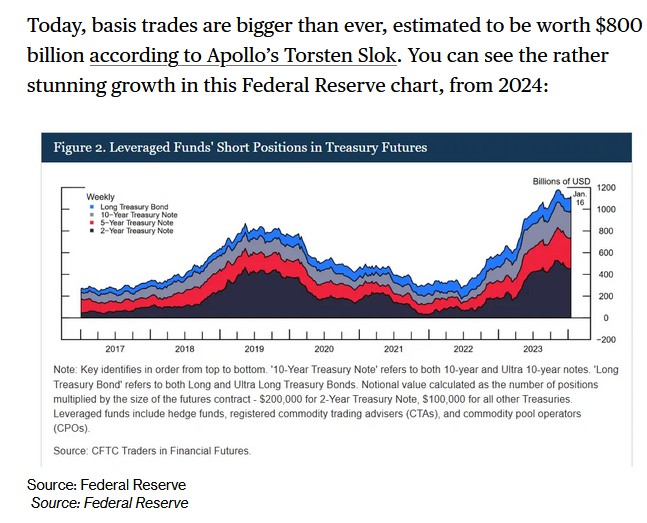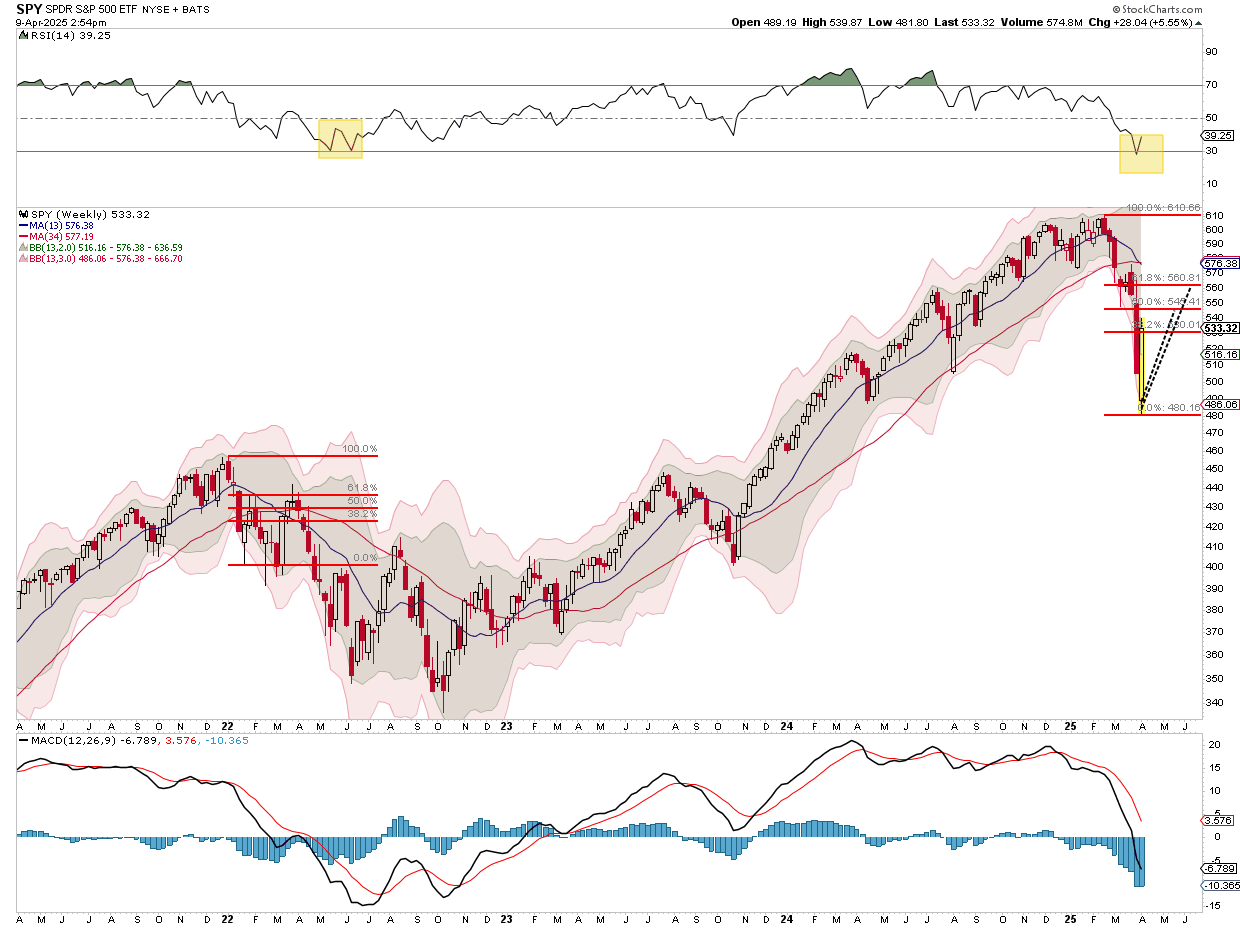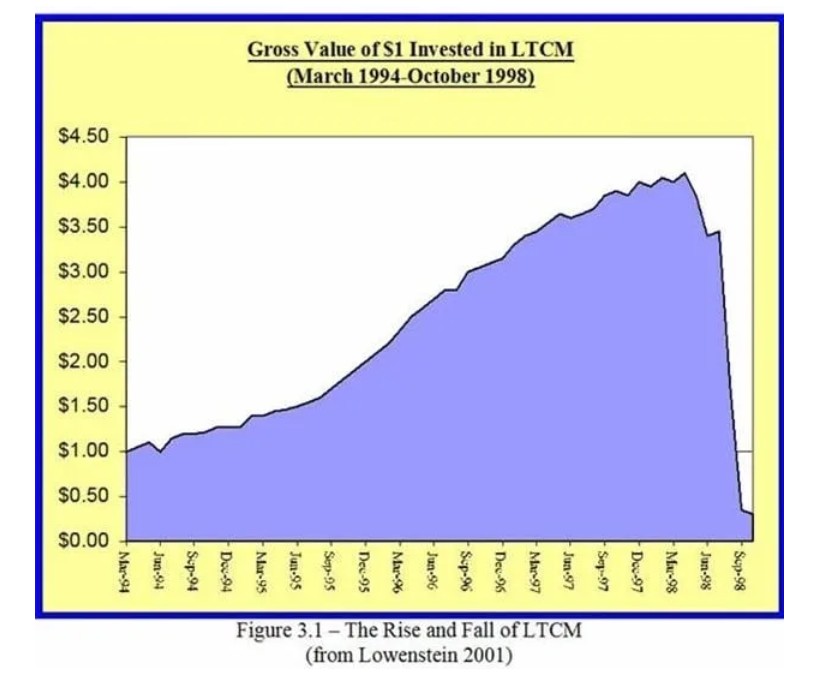What is up with the bond market? Many rumors are floating around. For instance, some claim China is selling Treasury bonds in retaliation for increased tariffs. Another rumor claims the bond market is besieged by investors raising money for equity margin calls. While both are plausible, negative interest rate swap spreads point to liquidity problems. We will have more on swap spreads in an article next week.
In late March, Bloomberg, in an article, recommended that the Fed create an emergency program to help bail out leveraged hedge funds caught underwater in basis trades.
Treasury basis trades are an arbitrage strategy that exploits the price difference between U.S. Treasury securities and their corresponding futures contracts. The trade, popular with hedge funds, aims to profit from minor discrepancies between the cash and futures market and the guaranteed convergence by maturity.
Basis traders buy/sell Treasury bonds and sell/buy futures contracts using up to 20x leverage. While the trade is a guaranteed money maker if held to maturity, illiquid market conditions can cause irregular fluctuations between the bond and future prices. These variations force margin calls. Hedge funds can either meet the margin call with cash or bonds or reverse the trade.
Today, that entails selling bonds and buying futures. Hence, that likely explains the swoon in the bond market. The graph and commentary below are courtesy of Bloomberg.
Either the bond market situation resolves itself, or, as we saw in 2019 and 2020, the Fed is forced to bail out hedge funds. Coincidentally, the bailout of Long Term Capital (LTCM) was also due to failed basis trades, as detailed in a section below.

What To Watch Today
Earnings

Economy

Market Trading Update
What a move! Yesterday, we wrote:
“Regarding the S&P 500 specifically, despite the complete reversal of gains yesterday, market breadth signals that we are likely closer to a near-term bottom than not. While the sell-off is certainly weighing on our emotions, selling at this level may alleviate some short-term pain, but will likely lead to missing out on a substantial rally that would provide a better exit point. Given the deep oversold conditions and the continued negative newsflow from the White House, as we saw on both Monday and Tuesday, any small piece of positive news is going to lead to a vicious rally. Use that rally to reduce risk and raise cash levels. Continue to disregard the majority of media headlines. Stock and bond market volatility has not been this high without a nearby bottom in prices.”
Yesterday, the White House took an interesting pivot. On Monday, a “fake news” headline suggested that the White House would pause tariffs for 90 days. After seeing the markets’ reaction to the headline on Monday, the White House used that same narrative to alleviate the continued asset liquidation in the stock and bond markets by pausing tariffs for 90 days.
Was Monday a “leak” and a “test balloon,” or did President Trump provide the market a much-needed short-term lifeline? Whatever the reason, it was welcome news and allowed investors to rebalance portfolio risk and exposures.
As shown, if we use the 2022 market correction as a model, the first decline led to a 61.8% retracement. While the decline so far has been more dramatic, there are two retracement levels that investors should consider using to raise cash levels and rebalance portfolio risk. The first is the 50% retracement level at 5480, then the 61.8% retracement level at 5600.
We will use both of the levels to begin raising cash levels, adding hedges, and rebalancing exposures as needed. With the weekly “sell signal” in place, we will very likely see the market either stall at those levels (best case scenario) or retrace to test recent lows (most likely case.). Let’s see if we can get some follow-through on today’s trading.
Long-Term Capital Management’s Bailout
The potential basis trade blowup reminds us of the Long-Term Capital Management (LTCM) bailout in 1998. The following quote is from our article- From LTCM to 1966:
LTCM specialized in bond arbitrage. Such trading entails taking advantage of anomalies in the price spread between two securities, which should have predictable price differences. They would bet divergences from the norm would eventually converge, as was all but guaranteed in time.
LTCM was using 25x or more leverage when it failed in 1998. With that kind of leverage, a 4% loss on the trade would deplete the firm’s equity and force it to either raise equity or fail.
The world-renowned hedge fund fell victim to the surprising 1998 Russian default. As a result of the unexpected default, there was a tremendous flight to quality into U.S. Treasury bonds, of which LTCM was effectively short. Bond divergences expanded as markets were illiquid, growing the losses on their convergence bets.
One or multiple hedge funds appear to be caught offside as the tariffs roil markets. What comes next? If the 1998 LTCM debacle is a good proxy, the Fed will support the hedge funds, ultimately protecting the banking system. QE is possible, but more likely is a program in which the Fed buys or sells cash bonds to the hedge funds while the hedge funds sell or buy Treasury futures to the Fed. Essentially, the Fed will help the hedge funds liquidate the trades.
The takeaway is that the financial system has highly leveraged players, including some like LTCM, which supposedly have “foolproof” investments on their books. Making matters fragile, the banks, brokers, and other institutions lending them money are also leveraged. A counterparty failure thus affects the firm in trouble and potentially its lenders. The lenders to the original lenders are then also at risk. The entire financial system is a series of lined-up dominos, at risk if only one decent-sized firm fails.

